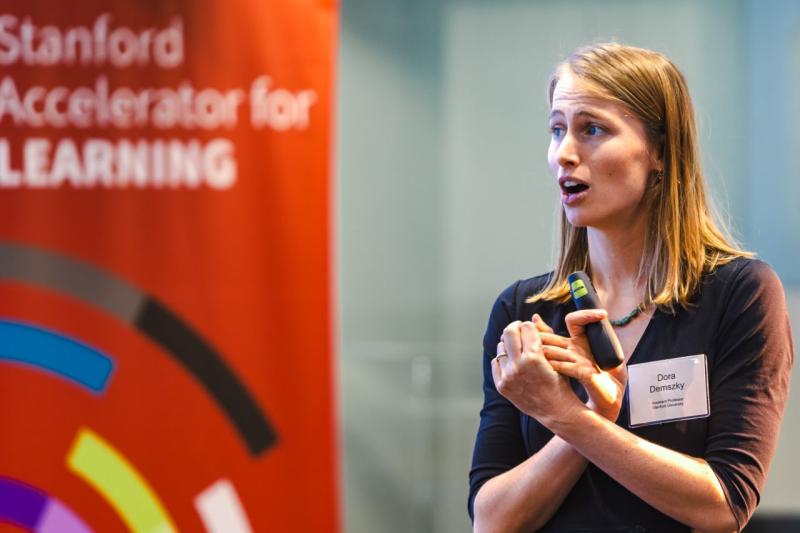
Technology can close achievement gaps, improve learning
As school districts around the country consider investments in technology in an effort to improve student outcomes, a new report from the Alliance for Excellent Education and the Stanford Center for Opportunity Policy in Education (SCOPE) finds that technology - when implemented properly -can produce significant gains in student achievement and boost engagement, particularly among students most at risk.
“This report makes clear that districts must have a plan in place for how they will use technology before they make a purchase,” said Bob Wise, president of the Alliance for Excellent Education and former governor of West Virginia. “It also underscores that replacing teachers with technology is not a successful formula. Instead, strong gains in achievement occur by pairing technology with classroom teachers who provide real-time support and encouragement to underserved students.”
Written by Professors Linda Darling-Hammond and Shelley Goldman at the Stanford Graduate School of Education and doctoral student Molly B. Zielezinski, the report is based on a review of more than 70 recent research studies and provides concrete examples of classroom environments in which technology has made a positive difference in the learning outcomes of students at risk of failing courses and dropping out.
Specifically, it identifies three important components to successfully using technology with at-risk students: interactive learning, use of technology to explore and create rather than to “drill and kill,” and the right blend of teachers and technology.
The report, Using Technology to Support At-Risk Students’ Learning, also identifies significant disparities in technology access and implementation between affluent and low-income schools. First, low-income teens and students of color are noticeably less likely to own computers and use the internet than their peers. Because of their students’ lack of access, teachers in high-poverty schools were more than twice likely (56 percent versus 21 percent) to say that their students’ lack of access to technology was a challenge in their classrooms. More dramatically, only 3 percent of teachers in high-poverty schools said that their students have the digital tools necessary to complete homework assignments, compared to 52 percent of teachers in more affluent schools.
Secondly, applications of technology in low-income schools typically involves a “drill and kill” approach in which computers take over for teachers and students are presented with information they are expected to memorize and are then tested on with multiple-choice questions. In more affluent schools, however, students tend to be immersed in more interactive environments in which material is customized based on students’ learning needs and teachers supplement instruction with technology to explain concepts, coordinate student discussion, and stimulate high-level thinking.
“When given access to appropriate technology used in thoughtful ways, all students—regardless of their respective backgrounds—can make substantial gains in learning and technological readiness,” said Darling-Hammond, the faculty director of SCOPE. “Unfortunately, applications of technology in schools serving the most disadvantaged students are frequently compromised by the same disparities in dollars, teachers, and instructional services that typically plague these schools. These disparities are compounded by the lack of access to technology in these students’ homes.”
The report includes several recommendations that could expand the use and impact of technology among at-risk high school youth:
- Technology access policies should aim for one-to-one computer access;
- Technology access policies should ensure that speedy internet connections are available;
- States, districts, and schools should favor technology designed to promote high levels of interactivity and engagement and make data available in multiple forms;
- Curriculum and instruction plans should enable students to use technology to create content as well as learn material; and
- Policymakers and educators should plan for “blended” learning environments, characterized by significant levels of teacher support and opportunities for interactions among students, as companions to technology use.
The report cautions that its recommendations must be accompanied by adequate professional learning opportunities for teachers on how to use the technology and pedagogies that are recommended, including technical assistance to help educators manage the hardware, software and connections to the Internet.
Darling-Hammond and Zielezinski joined Tom Murray, the Alliance’s state and district digital learning director, for a video webinar to discuss the report’s findings on Sept. 10. For archived video, please visit: http://all4ed.org/webinar-event/sep-10-2014/.
___
This story was written by the communications staff at the Alliance for Excellent Education in Washington, DC, and is also posted at www.all4ed.org.



